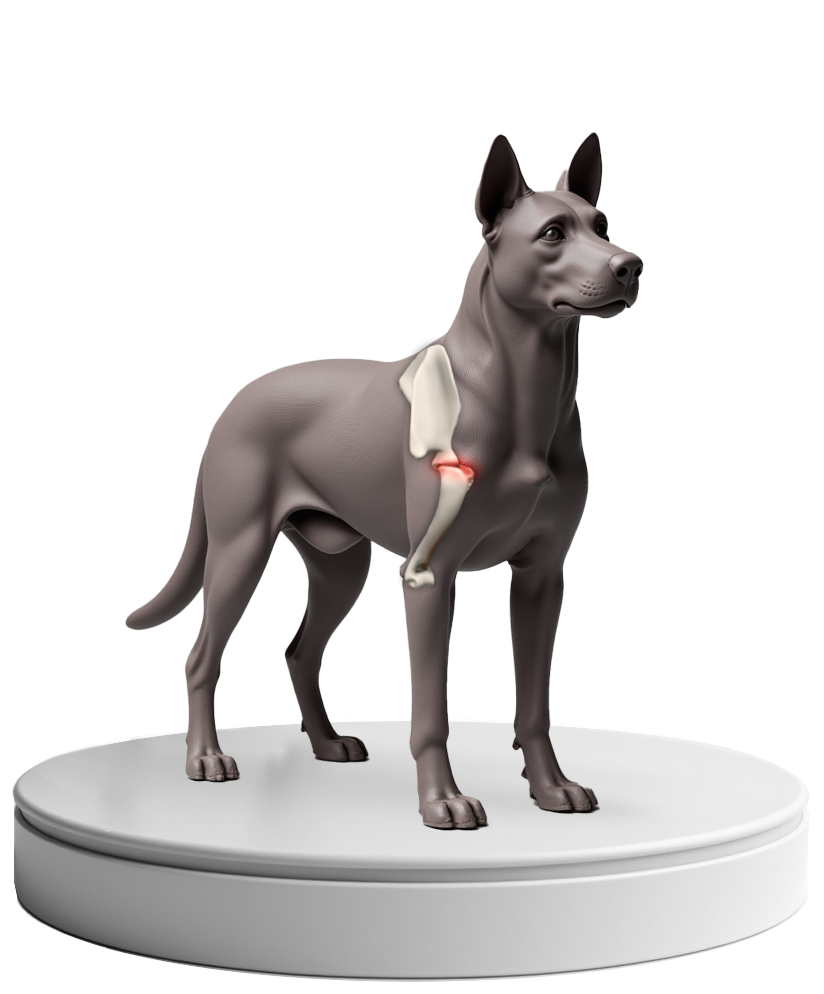
The influence of pain on the gait pattern
Diagnosis of invisible problems
Detecting invisible pain
How gait analysis makes movement disorders visible
Early detection of pain-related movement disorders through precise gait analysis with LupoGait
Pain is one of the most common causes of movement disorders in dogs, but often remains undetected as animals instinctively compensate for their discomfort. Lameness often only becomes visible when the pain has progressed. Gait analysis offers an objective method of detecting these subtle changes in movement at an early stage – even before they are visible to the naked eye.
With LupoGait, even the smallest abnormalities in gait can be detected and analyzed. This enables early diagnosis and targeted therapy, which can prevent long-term damage and chronic pain. Biomechanical analyses help to detect movement disorders at an early stage, before they lead to visible lameness or chronic pain. They provide the basis for precise diagnoses, targeted therapeutic approaches and preventive measures.
Detecting pain before it becomes visible
How pain affects the gait pattern
Pain in the musculoskeletal system leads to changes in gait as dogs try to relieve the painful areas. These changes can be subtle and are often difficult to detect. Typical signs in the gait pattern are
- Asymmetrical movement patterns: The dog shifts its weight to the pain-free side
- Shortened stride length: Pain in joints or muscles leads to a reduced stride length
- Irregularities in the stance and swing phase: The dog avoids putting weight on the painful limb
These adaptations often lead to compensatory problems in other areas of the body, which makes diagnosis even more difficult.
How LupoGait recognizes pain-related gait changes
LupoGait is a mobile gait analysis system that uses high-precision IMU sensors to objectively record the movement patterns of dogs. These sensors are more sensitive than the human eye and can detect even subtle deviations in the gait pattern.
- Stride frequency and stride length – changes indicate pain avoidance
- Symmetry index – Shows differences between the left and right side of the body
- Load distribution – Identifies relieving postures or overloading
By analyzing these parameters, pain-related changes can be detected at an early stage and treated in a targeted manner.
Muscular vs. structural problems
Differentiation through gait analysis
Another advantage of gait analysis with LupoGait is the ability to differentiate between muscular and structural problems.
Muscular problems
Often lead to uneven muscle tension and compensatory movement patterns. These can be treated with targeted physiotherapy
Structural problems
Such as hip dysplasia (HD) or osteoarthritis cause long-term changes in the musculoskeletal system and often require orthopaedic or surgical treatment
LupoGait provides the data required for a differentiated diagnosis and helps veterinarians and physiotherapists to select the right therapy.
Gait analysis as the key to invisible pain diagnosis
Pain does not always have to be visible to affect a dog’s mobility. With gait analysis and LupoGait, subtle changes can be detected at an early stage, enabling targeted therapy. This not only improves the dog’s quality of life, but also prevents long-term damage caused by incorrect loading.